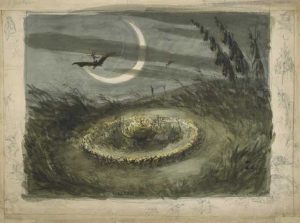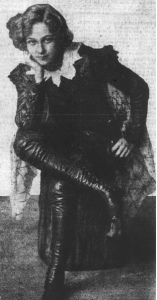
George Cruikshank, A Fantasy, The Fairy Ring
J.R.R. Tolkien’s early works, including a number of poems, the first sketches of his invented languages, and the first version of his mythology we know today fromThe Silmarillion, is positively “infested” by fairies and fairy-like beings, often winged and diminutive, a far cry from the lofty Elves of his later works.
My article, titled “Come sing ye light fairy things tripping so gay”: Victorian Fairies and the Early Work of J. R. R. Tolkien, traces Tolkien’s engagement with his immediate cultural and historical context at the point of composing these early works (1910s): the late Victorian and Edwardian interest in fairies and fairylore.
The article makes links between Tolkien’s early work and key artistic manifestations of this period’s interest with fairies such as:
- Victorian fairy painting – esp. suggesting parallels between Tolkien’s early poetry and paintings by George Cruikshank, Edwin Landseer, Richard Doyle and John Anster Fitzgerald
- J.M. Barrie’s play Peter Pan, which Tolkien saw in April 1910 in the Prince of Wales Theatre in Birmingham
- The flower-fairies of the Edwardian period, which seem to make an appearance in Tolkien’s “Qenya Lexicon”

Pauline Chase, who played Peter Pan in the performance Tolkien watched in April 1910
Tolkien later rejected the fairies in his letters, in the appendices of The Lord of the Rings, and in his seminal essay “On Fairy-Stories”. The article, however, closes with what I claim may be Tolkien’s “last word” on the fairies of his early work, now seen in a more sympathetic, self-reflective manner: his late story Smith of Wootton Major.
The entire article can be read here:
